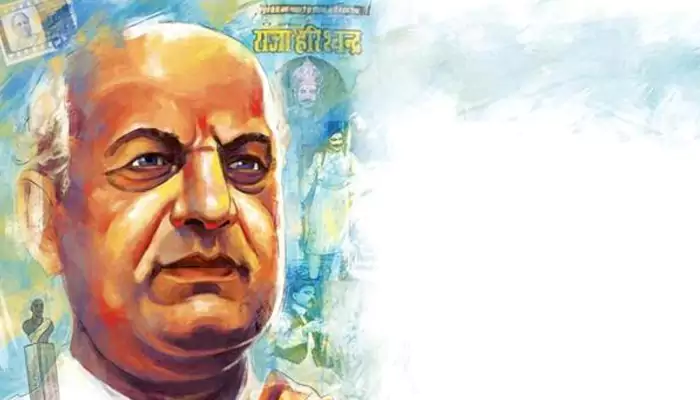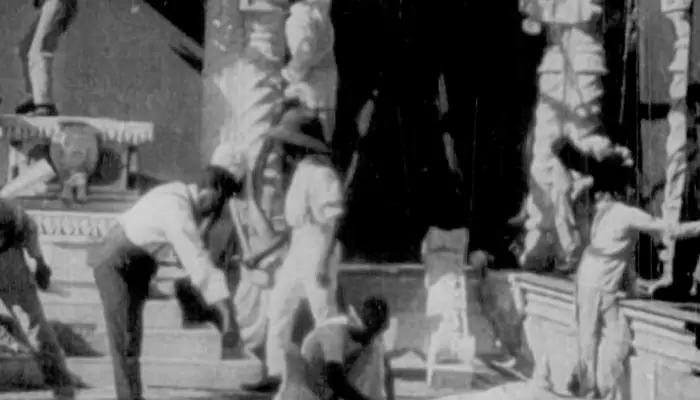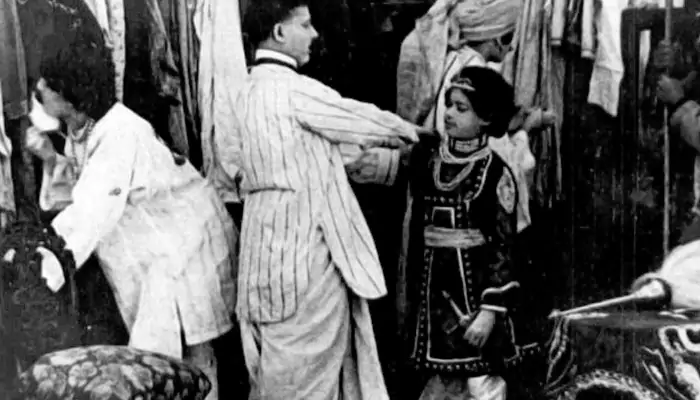
Ever wondered how 'Raja Harishchandra' - India’s first feature film - was made against all odds?
Dadasaheb Phalke decided to make a film – remember it was during the early 20th century - when the very idea of filmmaking was far-fetched, at least in India. However, being a man of extraordinary vision and obviously a deep passion for storytelling, Phalke set out to bring India's rich tales and legends to the big screen. And for that, he was ready to fight all odds. There was no proper roadmap, no studio system, and no experience or reference. And just when those issues were sorted, things like financial struggles and societal resistance followed.
Known as the "Father of Indian cinema", Dadasaheb Phalke built everything from scratch and made India's first full-length feature film, 'Raja Harishchandra'. The film had its theatrical release on May 3, 1913, at the Coronation Cinematograph and Variety Hall, Girgaon - and the rest is history. It laid the foundation for the Indian film industry, shaping the idea of entertainment for generations to come.
Tribute to DADASAHEB PHALKE on birth anniversary.
— Film History Pics (@FilmHistoryPic) April 30, 2018
Father of Indian cinema, born as Dhundiraj Govind Phalke at Trimbakeshwar. He produced 95 feature films & 26 short films in 19 years.
Seen here with his moving camera & with son Bhalchandra during shoot of ‘Raja Harishchandra’. pic.twitter.com/2dqca2ibme
(Credit: Film History Pics)
The making of 'Raja Harishchandra' - from the idea to the final output - itself seems straight out of a blockbuster film. Today, on Phalke'e death anniversary, let's learn that in this article.
Born on April 30, 1870, Dhundiraj Govind Phalke, better known as Dadasaheb Phalke, was an artist with a passion for storytelling. Initially a professional photographer and a printing expert, his life took a dramatic turn when he discovered the magic of cinema.
On April 14, 1911, Phalke watched 'Amazing Animals' at the America India Picture Palace in Girgaon. And the very next day, he took his family to see Alice Guy-Blaché's 1906 silent film 'The Life of Christ'. Witnessing the incredible story on the big screen sparked an idea in his mind -why not bring Indian mythology to life through films? That planted the seed for India’s first feature film.

He traveled to London to study filmmaking. He purchased essential equipment, including a camera, a perforator, and raw film reels, and laid the foundation of Phalke Films Company on April 1, 1912.
Then came the challenge of selecting the perfect story (well, the "first Indian film" had to be special, no?). After exploring various mythological tales, he settled on the legend of King Harishchandra. With a compelling script in hand, he embarked on an ambitious filmmaking journey.
Phalke realized that he needed to rely on theatre in order to make films. Hence, he sought help from drama troupes, particularly the Rajapurkar Natak Mandali, for costumes and props.
Drawing inspiration from renowned Indian painters, such as Raja Ravi Varma and M. V. Dhurandhar, he meticulously designed costumes and set designs. Instead of constructing elaborate sets, he painted intricate backgrounds - depicting palaces, forests, mountains, and caves - on large curtains, a technique that was ahead of its time.

Dadasaheb Phalke working on the sets of a palace scene for his film.
Since India lacked filmmaking infrastructure at that time, Phalke sourced all technical equipment - including cameras, lights, laboratory tools, editing machines, and projectors - from England, France, Germany, and the United States.
Phalke wasn’t just the writer and director - he was also the production designer, editor, makeup artist, and film processor (truly a one-man army). His commitment was phenomenal, even pledging his life insurance to fund the film. Meanwhile, his wife sold her jewelry to support his cinematic dream (so you see, they aren't so wrong when they say, "Behind every successful man, there's a woman").
Dhundiraj Govind Phalke ( Dadasaheb Phalke),The Father of Indian Cinema.
— indianhistorypics (@IndiaHistorypic) April 9, 2019
In 1913 He Produced and Directed India's First Movie 'Raja Harishchandra' pic.twitter.com/9RNAUrVqYb
(Credit: indianhistorypics)
More than anything else, finding suitable actors for the film was a bigger challenge. He placed advertisements in newspapers, inviting aspiring actors to audition. Although a lot of people came in for the audition, he wasn't satisfied with most of them. And hence, he finally decided to hire actors from theatre companies.

After six months of relentless hard work, 'Raja Harishchandra' was ready. The film had its grand premiere on April 21, 1913, and officially hit theaters on May 3, 1913, at the Coronation Cinematograph and Variety Hall.
RAJA HARISHCHANDRA : released today in 1913
— Film History Pics (@FilmHistoryPic) May 3, 2022
India’s first full length feature film by Dadasaheb Phalke. It was screened for public at Coronation Cinema in Girgaon, Mumbai. pic.twitter.com/WCoPcDBwFd
(Credit: Film History Pics)
The response - needless to say - was overwhelming! And that's not only because it was the first Indian film, but also because it did full justice to the source material. As a result, the film ran to packed houses for weeks, with audiences mesmerized by this new form of storytelling. Due to popular demand, additional screenings were organized at multiple locations.
(Credit: Gold Vintage)
That was only the beginning. Encouraged by the mammoth success of 'Raja Harishchandra', Phalke went on to create several more films, laying the foundation for what we now know as the Indian film industry.
Phalke's legacy lives on even today, inspiring countless individuals who dream big and out-of-the-box.